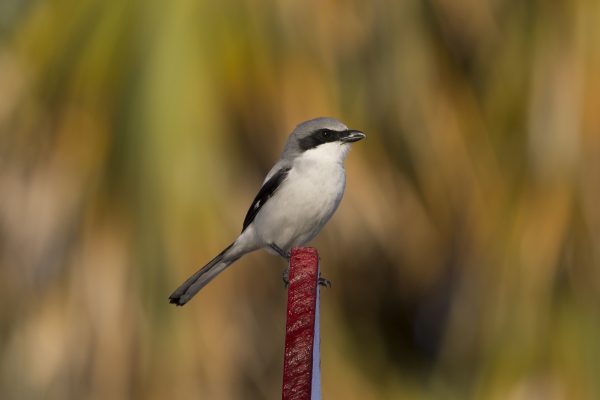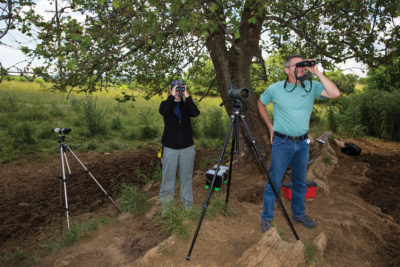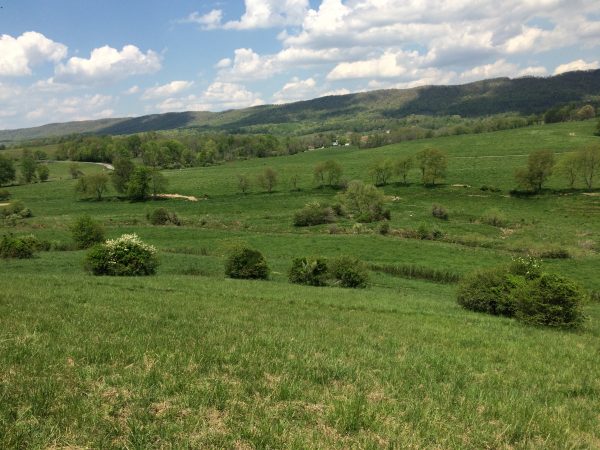
Loggerhead Shrike. Photo by Dennis Church.
Reminiscent of a mockingbird with a black mask, the loggerhead shrike is nicknamed the “butcher bird” for its habit of impaling prey on thorny shrubs and barbed wire. Like a raptor packed into a songbird’s body, shrikes hunt insects, small mammals, reptiles and occasionally birds. They are most often found in grazed pastures with scattered shrubs. Once widespread, shrikes are now fairly rare in Virginia, with the majority of the known population found west of the Blue Ridge Mountains. Shrikes are considered a Tier I Species of Greatest Conservation Need in the Virginia Wildlife Action Plan.

A loggerhead shrike impaling a grasshopper on barbed wire Photo by: Andy Morffew
The causes of shrike declines in Virginia and elsewhere across their range are poorly understood. Since 2014, DWR has been working to address this information gap through a collaborative banding project with the West Virginia Division of Natural Resources (WVDNR). Working under the umbrella of the Loggerhead Shrike Working Group, the two state wildlife agencies are giving one another a hand in trapping and color banding shrikes across state boundaries. Once trapped, each individual is banded with one standard USGS band and 3 plastic color bands (2 bands per leg) and released at the capture site.

Personnel from USFS, WVDN, VDWR and SCBI participate in shrike banding in Smyth County, VA in December 2014. Photo by Amy Johnson.
This project will help researchers answer several baseline questions about shrike populations and their conservation needs. The unique color combinations of the bands allow biologists to identify individual birds that are re-sighted.

Two loggerhead shrikes Photo by Linda MacPhee-Cobb.
This helps to understanding the relationship between breeding and wintering shrikes; shows differences in seasonal habitat use; provides an understanding of shrike population dynamics; and their use of habitats over time.
This collaborative project is part of the Shrike Working Group’s efforts to establish a coordinated research project across eastern North America, so that data from multiple states can be pooled to better understand the causes of the shrike’s decline. Recent shrike work in Virginia and West Virginia has been accomplished with the help and collaboration of enthusiastic partners such as the US Forest Service and the Smithsonian Conservation Biology Institute (SCBI).

Loggerhead shrike habitat


